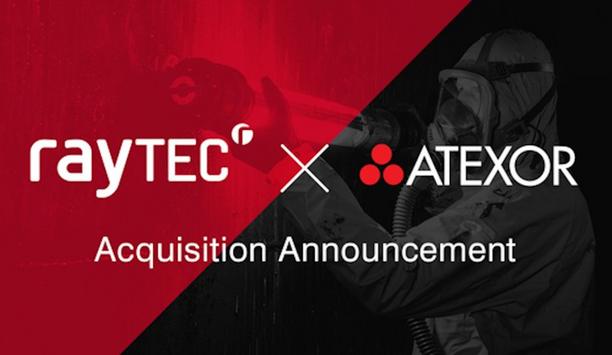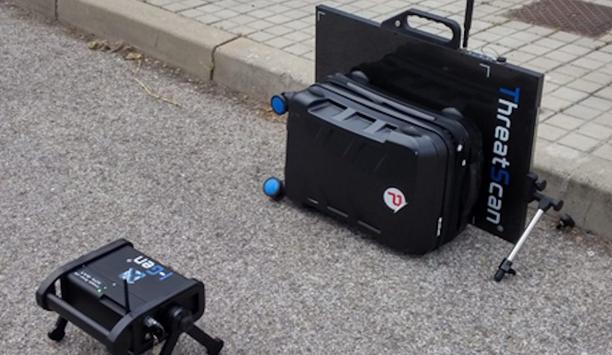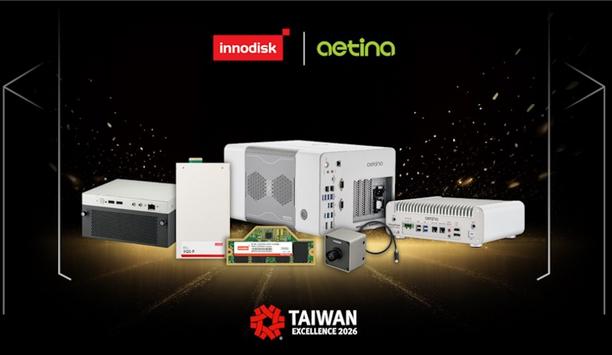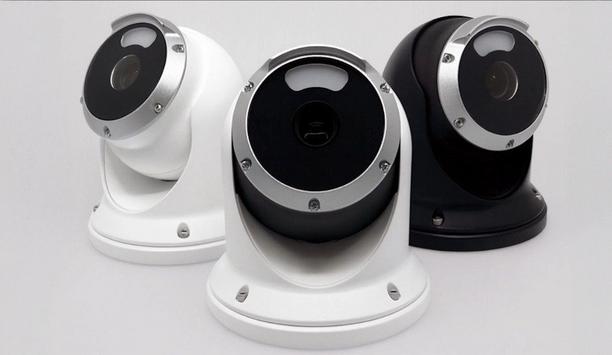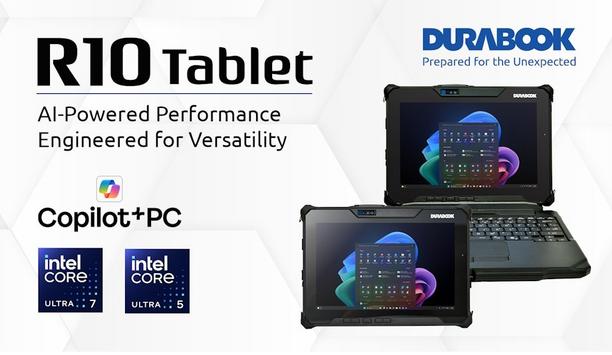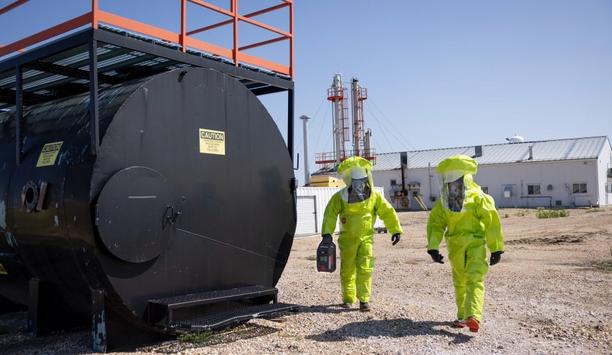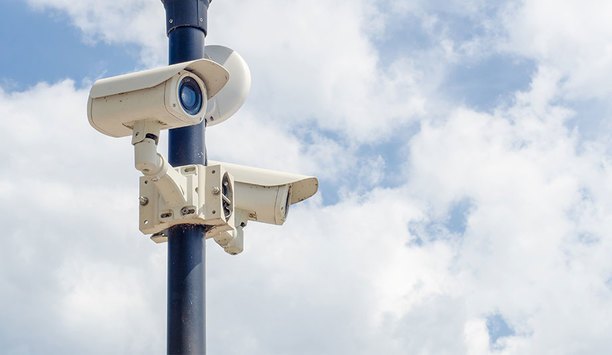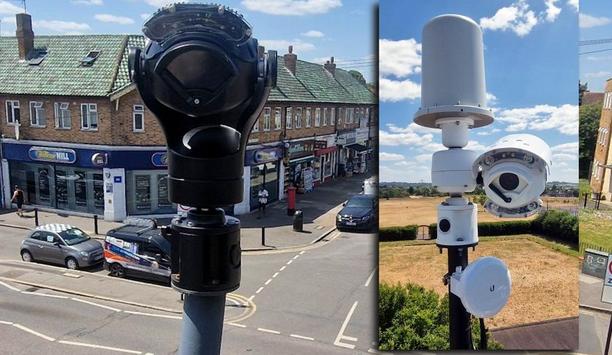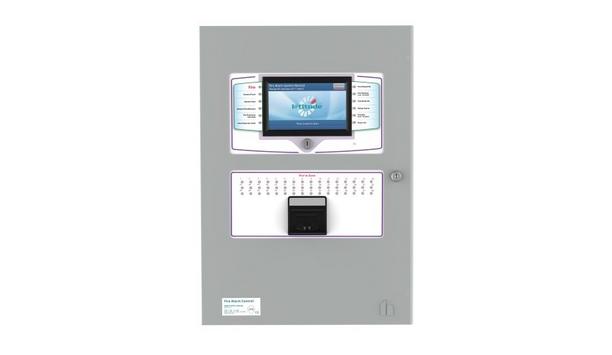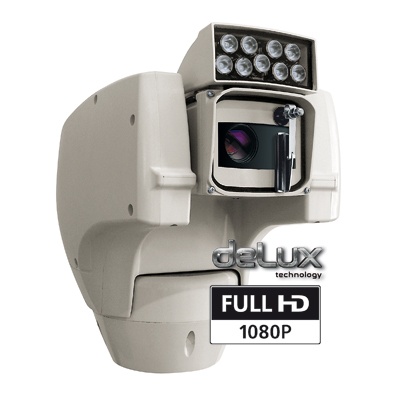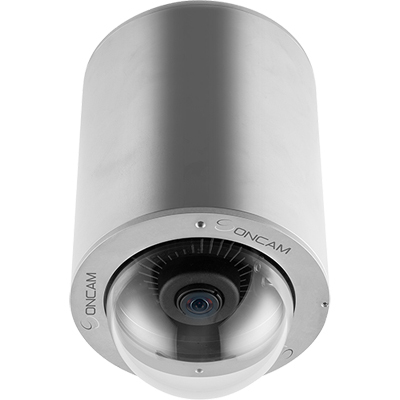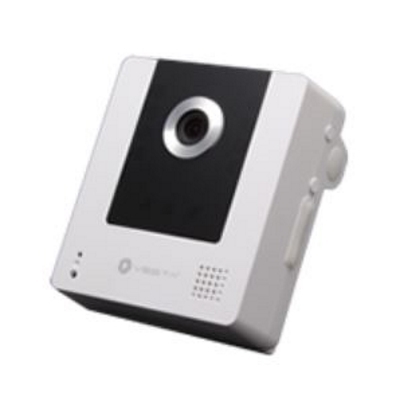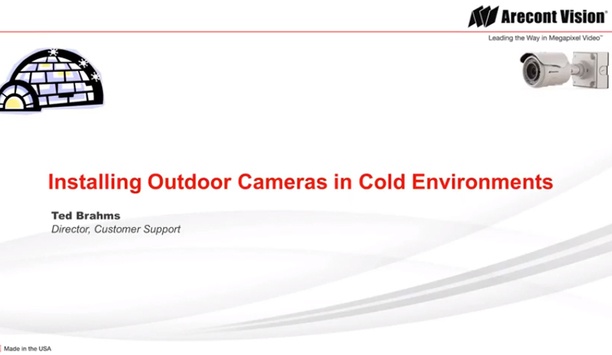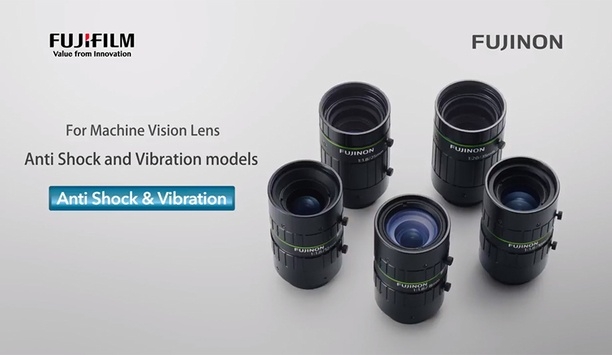Ruggedized products
Water ecosystems, ranging from high-altitude glacial lakes to expansive wetlands, are essential to the planet. These ecosystems regulate the climate, filter pollution, and support rich biodiversity. However, many are located in remote, hard-to-access areas, leaving them susceptible to gradual and often unnoticed degradation. The silent crisis in the blind spots The most significant challenge in protecting these vital waters is the growing gap between the rapid pace of environmental change and...
Aetina Corporation, a pioneering provider of Edge AI solutions, has announced the launch of its next-generation MXM AI Accelerator Module series accelerated by NVIDIA RTX PRO Blackwell Embedded GPUs, which is part of its CoreEdge MXM AI Module family. This new series is accelerated by the NVIDIA Blackwell GPU platform to deliver up to 3X the AI performance uplift of its predecessor, establishing a new benchmark for advanced AI computing at the edge These modules are designed to be compact,...
Raytec Ltd, a pioneer in LED lighting for security and safety-critical applications, announces the acquisition of Atexor Oy, a Finnish specialist in portable ATEX and IECEx lighting. This strategic acquisition broadens Raytec’s product portfolio and reinforces its commitment to delivering high-performance lighting for any hazardous location. Raytec’s own commitment “Atexor’s reputation for technical excellence and quality perfectly complements Raytec&rsq...
FLIR, pioneer in high-performance marine thermal-imaging systems, is pleased to announce that the Ocean Scout Pro handheld thermal imaging camera, has been awarded top honors in the “Personal Equipment” category at the 2025 DAME Design Awards. The DAME Design Awards, held annually at Metstrade in Amsterdam, celebrate excellence in marine equipment design, innovation, and functionality. Winning in the category highlights the Ocean Scout Pro’s contribution to enhancin...
3DX-RAY, a pioneer in advanced X-ray imaging technology, is pleased to announce the successful acquisition of a significant double-digit unit contract with the esteemed Indian partner for the ThreatScan LS1 system. This innovative solution has been selected for its impressive size, ruggedness, and exceptional capability to efficiently handle Passive Infrared (PIR) devices activated by X-ray technology. EOD and security applications The ThreatScan LS1 is an advanced X-ray imaging system specif...
Innodisk Group, a pioneer in edge AI solutions, has been recognized with six honors at the 2026 Taiwan Excellence Awards. Among the winners are four products from Innodisk and two from its subsidiary Aetina, spanning DRAM modules, data center SSDs, smart camera modules, and AI edge systems. The awards highlight Innodisk Group’s transformation from embedded hardware expertise toward a unified edge AI ecosystem integrating storage, computing, and sensing. Advance edge AI innovations Build...
News
Iris Innovations, a world pioneer in specialized marine camera technology, has announced the launch of Photon, a compact ultra-low-light 4K night vision camera designed to make safe nighttime navigation accessible to every boater. Whether cruising after dusk, fishing before sunrise or patrolling remote coastlines, Photon delivers exceptional clarity and full-color imagery in near-total darkness – all without the need for infrared or thermal imaging. New benchmark for performance Unlike thermal cameras, which can struggle in low thermal contrast conditions, Photon excels in real-world environments, maintaining exceptional visibility and situational awareness. With an incredible minimum illumination of just 0.0003 lux (extremely high sensitivity to low light), the camera captures detailed, full-color video even under starlight conditions. Combined with best-in-class ultra-high-definition 4K resolution and a highly competitive price tag, Photon sets a new benchmark for performance and value in marine imaging. Cost of thermal and other night vision cameras “Photon is for anyone who wants to navigate with confidence after dark and can be used on any vessel: from leisure and sports fishing boats to yachts, commercial operators and law enforcement patrol craft,” said Carl Hitchcock, CEO of Iris Innovations. “It delivers extraordinary low-light performance at a fraction of the cost of thermal and other night vision cameras, and because it’s 4K, the detail and definition are outstanding. We’ve designed it to work seamlessly with pioneering marine electronics systems, so it’s ready for any boat.” Power over Ethernet (PoE) connectivity Built for the demands of the marine environment, Photon is fully EN60945 EMC compliant and rated to IP67, ensuring long-lasting performance in saltwater and harsh weather. Power over Ethernet (PoE) connectivity simplifies installation, while an included rugged, waterproof PoE injector makes setup quick and reliable. Compatible with major navigation systems, including Raymarine, Navico (Simrad, B&G and Lowrance), Furuno and Garmin (via Iris’s CMAC management system and IrisControl App for Garmin OneHelm), Photon integrates effortlessly into modern helm displays. Marine and commercial applications “We’ve always focused on designing rugged, purpose-built cameras for demanding marine and commercial applications,” added Hitchcock. “With Photon, we’ve taken that expertise and combined it with cutting-edge low-light and 4K processing technology to deliver a camera that performs brilliantly at a price point that puts it within reach for all boat owners and operators.” Photon camera at METSTRADE 2025 Iris Innovations will be launching its Photon camera at METSTRADE 2025 in Amsterdam this November. Retailing at just $1295.00, Photon will be available worldwide through Iris Innovations’ global dealer network from the end of November and is available with a standard 12mm lens for viewing at distance, and a 2.8mm super wide-angle lens option for rear view, side view and backup applications.
The steute business division - Controltec has expanded its range of wireless foot switches to include a variant developed specifically for heavy-duty applications such as welding stations. In such applications, wireless foot switches really make sense because the lifetime of cabled foot switches can be limited due to weld spatter damaging the cables. And during normal work processes, the cables can also be a tripping hazard. Robust and extremely enlarged protective shield Conventional foot switches are not suitable here, however, because their protective shields are not large enough for the reinforced safety shoes worn by many operators, who still need to be able to actuate the pedals freely. Especially for heavy-duty applications similar to these, steute has now engineered a robust and extremely enlarged protective shield from powder-coated steel. Wireless foot switch The shield is fixed to the wireless foot switch and provides enough space to operate both pedals even when wearing reinforced safety shoes as protection against weld spatter. The protective shield also guards against any unintentional actuation of the pedals. A carrying handle facilitates flexible positioning of the foot switch. sWave wireless technology An RF GFS 2 XL wireless transmitter has been integrated in the protective shield – well protected from mechanical impact and so that its signals can reliably reach the antenna of the corresponding receiver unit. The sWave wireless technology used facilitates ranges of up to 45 meters indoors, even in adverse industrial conditions. The RF GFS 2 XL is one of the first switches to be equipped with this wireless technology – SW2.4LE-IND – in serial production. New wireless foot switch This new wireless foot switch was originally developed as a customized project for a company producing welded structures. Having been successfully tried and tested in that application, it is now available within the steute standard range of wireless switching devices.
Durabook, the global rugged mobile solutions brand owned by Twinhead International Corporation, announced the launch of its next-generation AI-powered fully rugged R10 tablet. Equipped with high-performance Intel Core Ultra 200V series processors, the 10” device is one of the first Copilot+ PC rugged tablets on the market. Redefining versatility in the tablet world, the R10 can be paired with a detachable backlit keyboard, seamlessly transforming it into a 2-in-1 rugged laptop PC. This adaptable design delivers the ideal balance of performance, reliability, and mobility, empowering users with a powerful and intelligent rugged device that fuses cutting-edge AI capabilities with Durabook’s hallmark durability and field-proven design. Durabook devices Twinhead’s CEO, Fred Kao, said: “Durabook devices are built to meet the needs of professionals who depend on powerful, reliable technology to stay productive in any environment. The compact and versatile R10 redefines the 10-inch rugged tablet category by providing AI-enhanced productivity supported by smart engineering for optimal usability.” “The R10’s adaptive design and customization capability make it the perfect partner for field service operatives working across a wide range of sectors, including industrial manufacturing, warehouse management, automotive diagnostics, public safety, utilities, transport and logistics.” AI-enhanced performance Equipped with the Intel Core Ultra 200V series CPU, the R10 delivers exceptional computing power with enhanced AI performance, energy efficiency, and multitasking capability. Featuring new Performance/Low Power Efficient core architecture, low-latency LPDDR5x on-package memory, and speeds of up to 5.0 GHz, the R10 exceeds expectations by delivering 50% higher performance than 12th Generation Intel CPUs. Built for AI at the edge Built for AI at the edge, the R10’s combination of CPU, GPU, and NPU compute engines delivers 120 TOPS of total AI performance for real-time mission-critical decision-making. As a Copilot+ PC, the R10 also integrates on-device AI acceleration, enabling Microsoft Copilot features to run securely and smoothly, even without cloud access. This sophisticated level of tech provides 24/7 instant summarization, intelligent search, and adaptive task management for professionals in the field. Rugged Reliability in All Conditions Designed to operate in the harshest conditions, the R10 meets MIL-STD-810H, 6-foot drop, and IP66 standards. With proven resistance to drops, shocks, vibration, dust, and even salt fog, the R10 also remains operative in the most extreme temperatures, from sub-freezing -29°C (-20°F) to 63°C (145°F) heat. Additionally, the tablet is also certified with MIL-STD 461G, for electromagnetic compatibility, and ANSI/UL C1D2 for use in specified hazardous locations and potentially explosive environments. Sunlight-readable display The R10 also features a 10.1” TFT LCD WUXGA (1920 x 1200) DynaVue sunlight-readable display with brightness up to 1,000 nits, so every detail of imagery is delivered with the utmost clarity in all weathers. With Microsoft Pen Protocol (MPP) 1.51 support, the R10 delivers precise stylus performance, empowering engineers to sign reports, sketch diagrams, and annotate blueprints directly on the screen with accuracy and ease. Engineered for Connectivity and Endurance The R10 comes equipped with a comprehensive suite of integrated technologies, including one Thunderbolt 4, USB 3.2 Gen 2 Type-A port, dual SIM (Nano SIM & eSIM), up to two RJ-45 ports and an optional serial port RS-232. In addition, wireless connectivity includes 5G/4G LTE, Wi-Fi 7, Bluetooth V5.4 and GPS, ensuring constant, secure connectivity in any environment. Adding to its versatility, the tablet supports modular expansion options tailored for field applications, such as a barcode scanner, magnetic stripe reader, smart card reader, and RFID (NFC) reader, enhancing productivity across diverse industrial and operational scenarios. Specialized field applications require extended battery life, so the R10 features a hot-swappable battery design with an optional high-capacity battery up to 16 hours, enabling users to hot-swap batteries in the field without any downtime. Optimal security as standard Purpose-built for professionals handling sensitive data, the R10’s integrated Microsoft Pluton Security Processor provides chip-to-cloud protection at the hardware level, safeguarding credentials and encryption keys from the moment the device powers on. Advanced security support also includes TPM 2.0 as standard and optional Intel vPro, as well as a 5.0 MP IR camera for Windows Hello with dynamic shutter design, 11 MP rear camera with dynamic shutter design, Windows 11 Secured-core PC and an optional fingerprint scanner meet the needs of customers today in an ever-evolving mobile work environment. Designed to deliver full computing capability in a truly mobile form, Durabook has developed the R10 with optimized usability in mind. Designed to minimize e-waste and reduce the total cost of ownership, the R10 promises long-term performance and a strong return on investment for customers working across various industries.
Blackline Safety Corp, a pioneer in connected safety technology, announces that its EXO 8 area monitor has been named a 2025 Firehouse Innovation Award winner — marking the eighth major industry honor this year for the groundbreaking device. The Firehouse Innovation Awards celebrate the most advanced technologies supporting firefighting and emergency response. In announcing the winners, Firehouse Magazine praised EXO 8 for ‘setting a new standard as the only area monitor that detects eight different gases and gamma radiation in a single, rugged, portable device,’ calling it ‘a game changer for firefighters who operate in high-stakes environments.’ Emergency response teams “Earning our eighth award this year is a powerful testament to EXO 8’s impact,” said Cody Slater, CEO and Chair, Blackline Safety. “It’s redefining what teams expect from area monitoring — connecting responders and industrial crews to the critical data they need to make faster, safer decisions when it matters most.” EXO 8 is the only portable area monitor that combines gas and gamma radiation detection in a single connected unit, streaming data live to the cloud so emergency response teams get instant visibility in situations where they often face unknown hazards. Other major recognitions In addition to this latest award, EXO 8 has earned seven other major recognitions in 2025 for its innovation, design and impact on worker and public safety, including: Two Occupational Health & Safety (OH&S) New Product of the Year Awards Red Dot Design Award Préventica Paris Innovation Award Three OH&S Industrial Hygiene Awards Visualizing activity timelines This week, Blackline Safety also refreshed its EXO 8 analytics report within the Blackline Live platform, which delivers real-time visibility into devices, people and safety across worksites. This update gives EXO users a deeper understanding of their area monitor data, and the ability to see gas readings by location or track gamma trends over time, making it easier to visualize activity timelines and simplify audits and reporting. “Firefighters and first responders put everything on the line to protect others,” Slater added. “At Blackline, we’re driven by the belief that they deserve that same level of protection in return. With EXO’s real-time monitoring and data, we can give them the visibility, confidence and connection they need to get home safe at the end of the day.”
Allient Inc., a designer and manufacturer of specialty Motion, Controls and Power products and solutions for targeted industries and applications, has announced it will present its electrification, precision motion and lightweighting technologies that are defining the next-generation of tactical systems at the Association of the United States Army (AUSA) Annual Meeting & Exposition on October 13-15 at the Walter E. Washington Convention Center in Washington, D.C. If they are attending, please visit the Booth #4243 or get in touch to arrange a meeting during the event. Allient's latest defense solutions At AUSA 2025, Allient will feature its latest defense solutions, including: UAS Propulsion Made in the USA You Can Count On - Allient’s frameless and slotless motors offer industry-pioneering torque density with zero cogging, ideal for agile and reliable UAV/UAS systems. Experience compact designs that enable smooth, precise flight control. Electrified Ground Mobility - Allient’s electrification expertise powers next-gen vehicles with silent electric drive systems that cut weight without sacrificing performance. Integrated Controller & Actuation Systems - From rugged motion control to sophisticated actuation, our Allient based systems deliver real-time, multi-axis coordination with high-bandwidth communication, built for mission-critical environments. Lightweighting Without Compromise - Allient delivers advanced ground vehicle solutions with lightweight composites and electrified drive systems, boosting performance and battlefield endurance. Gimbal & Camera Stabilization - Allient’s high-precision motors and drives deliver cogless, high-resolution motion for targeting, ISR platforms, and autonomous systems. How Allient is shaping the future of defense "Allient’s track record in defense applications continues to set us apart in the industry," said Steve Warzala, President of Allient Defense, Chief Growth Officer, and Corporate Vice President. “We look forward to showcasing our latest advancements and unique blend of technologies at AUSA, highlighting how Allient is shaping the future of defense for the Warfighter and beyond.” Latest advancements in defense technologies AUSA is North America’s premier land power exposition and professional development forum, bringing together military pioneers, government officials, and industry innovators from around the world. Organized by the Association of the United States Army (AUSA), the event highlights the latest advancements in defense technologies, military systems, robotics, ground vehicles, and mission-critical solutions supporting the U.S. Army and allied forces.
Viking Electronics is making it easier than ever to secure entry points and streamline communication with the launch of the E-32T Series IP Intercoms. Built for the security-conscious environments, these rugged intercoms deliver reliable voice communication, simple setup, and advanced SIP security features - all in one powerful package. The E-32T Series supports SIP over TLS and full SIPS, ensuring secure communication and compatibility with pioneering VoIP providers. A built-in Web User Interface (Web UI) allows fast programming from any device with a browser, no special software required, making installation and system management effortless for integrators and facility managers. Viking’s Enhanced Weather Protection For harsh outdoor environments, the E-32T-SS-IP-EWP offers Viking’s EWP, meeting IP66 standards Designed for flexibility, the E-32T-SS-IP can dial programmable numbers, activate doors or gates with its on-board relay, and visually confirm call status with a bright blue LED. Powered by PoE Class 2, these intercoms reduce wiring complexity and installation costs. For harsh outdoor environments, the E-32T-SS-IP-EWP offers Viking’s Enhanced Weather Protection (EWP), meeting IP66 standards. With gaskets, sealed connections, gel-filled connectors, and potted circuit boards, this version stands up to rain, snow, and extreme temperatures. Why choose the E-32T Series? Secure SIP Communication – Protects against unauthorized access with SIP over TLS and full SIPS. Fast, Flexible Setup – Program remotely via Web UI, upload custom tones or announcements, and simplify installs with PoE. Built for Demanding Environments – Rugged stainless-steel faceplate, vandal-resistant design, and EWP option for IP66 weather resistance. Versatile Applications – Ideal for entry points, gates, parking facilities, campuses, and businesses. Security, simplicity, and durability The E-32T Series delivers a balance of security, simplicity, and durability, making it a smart choice for integrators, security professionals, and organizations looking to strengthen access control. Viking Electronics designs and manufactures over 500 security and communication products, including emergency phones, entry systems, paging interfaces, mass notification systems, and more. Founded in 1969 and based in Hudson, Wisconsin, Viking products are built in the USA and backed by a two-year limited warranty with free lifetime technical support.


Expert commentary
TOA Corporation (UK) Ltd discuss what changes COVID-19 has bought to the installation of VA/PA Systems and how the integration of IP has impacted on that. With a year and a half of global uncertainty, we have seen huge changes in what VA/PA systems will need to deliver in order to provide safe and robust solutions with advanced zone and directional messaging. The impact of COVID has pushed installers to re-think what end-users need long-term to manage any future changes in guidelines especially for large events and complex applications such as travel hubs and how the integration of IP will assist with installing safe systems in the future. Providing public announcements PA/VA has been one of the few parts of our industry that has remained consistent and buoyant during the lockdown. It has been the ideal time for public buildings to upgrade as restrictions did not apply to the construction industry and many installations were actually fast-tracked in the hope that when restrictions lifted commercial properties could open as quickly as possible. PA/VA has been one of the few parts of our industry that has remained consistent This was coupled with the knowledge that changes would have to be made to address the increased demand in providing public announcements outside the standard evacuation messages that most VA/PA have been traditionally used for and enable the impact of having to be flexible to deliver multiple messages. Flexible system management So what is changing? Leading in VA/PA is the availability of IP which enables more flexible system management. It allows installation/solution management engineers to offer remote access to complex systems from a central control room meaning that they can maintain and control systems from one hub and operate for multiple areas on large complex sites such as an airport or stadiums. This provides not only a better level of technical coverage across a whole site but also allows an engineer to monitor and fault find without the delay of waiting to being able to access a specific area. This is especially important for vulnerable applications such as schools and health facilities as it enables them to control and reduce the amount of interaction with engineers they need to give physical access to – therefore reducing risk. Potentially less maintenance This makes it more financially viable for both the end-user and the maintenance provider Long-term, IP also makes these systems much more cost-effective. For example, one engineer can manage a hub of multiple locations with potentially less maintenance call-out costs. This makes it more financially viable for both the end-user and the maintenance provider to justify the initial investment. With these systems being paramount to people’s safety remote intervention allows for swift fault finding and problem resolution in a more effective response time and cost-effective way. To enable this the biggest development has been the integration between product manufacturers and software developers. They have been able to collaborate greatly to get products such a horn speakers to connect via industrial standard network protocols giving much greater flexibility in remote system management. Multi-Rack systems The technology involved in VA/PA, especially integrating with IP, has seen huge growth recently and we are involved in projects that involve multi-rack systems to enable controlled zone management and evacuation options with greater collaboration between integrators to get the systems to work effectively. VA/PA systems must be at the forefront of long term solutions and sustainability As more people are allowed to gather in larger numbers public-facing buildings need to address their evacuation and voice announcement procedures in order to be compliant. They need to be able to deliver clear and effective messages to their visitors in order to remain open whenever guidelines change. VA/PA systems must be at the forefront of long-term solutions and sustainability. The other area of VA/PA that has changed immensely in the last 18 months is the vast difference in messaging requirements that organizations need. Public safety announcements Systems that have been used infrequently for emergency situations only are now delivering daily messages with public safety announcements. In reality, although we all hope that we will never go back to the peak of lockdown, installations must be robust to cope with any situation in the future. Many smaller spaces that wouldn’t have thought they would need a PA system at all now understand that they too have an obligation to deliver public information and guidance and on a regular daily basis and this will lead to system designs being scaled up and down to meet the broadening array of applications that require VA/PA and how this is managed in the event that new protocols have to be introduced. Detailed technical plans Systems should be certified on the European Standard EN 54-16 and should be expertly designed Design and planning should be key when sourcing the right solution. Systems should be certified on the European Standard EN 54-16 and should be expertly designed to specification with detailed technical plans and tailor-made to the requirements of the end-user. With people’s safety in your hands, you cannot get these systems wrong so it is important that installers are able to draw on the expert technical team resources that we, as a manufacturer, offer in adhering to this standard and for us to be able to provide a commissioning service to sign off on these important safety systems. Compared with traditional lights and sounders systems we believe the future of evacuation will be voice-based. In our ever-increasing culturally diverse world we have to embrace systems that need to be multi-lingual or be able to dedicate a message to a specific target audience and be able to be drilled down to zones and give much more directional information. Multi-Zoned academies As office buildings get taller, health facilities become super hospitals or schools upgrade into multi-zoned academies we have to be able to evacuate or hold back evacuation to enable safe crowd control. In order to facilitate this VA will have to replace traditional systems or work in tandem with them. We must point out that in residential high-rise properties the primary method of evacuation, to comply to BS 8629, would still be traditional lights and sounders even if you install a separate VA system. Voice Alarm and Public Address is a long-term investment, especially as the global situation may take many years to recover, and as manufacturers working with our integrators and software developers we must continue to lead in the development of the best systems to ensure we can keep everyone safe.
Today, the world is connected like never before. Your watch is connected to your phone, which is connected to your tablet and so on. As we’ve begun to embrace this ‘smart’ lifestyle, what we’re really embracing is the integration of systems. Why do we connect our devices? The simplest answer is that it makes life easier. But, if that’s the case, why stop at our own personal devices? Connection, when applied to a business’ operations, is no different: it lowers effort and expedites decision making. Integrating security systems Systems integration takes the idea of connected devices and applies it to an enterprise Systems integration takes the idea of connected devices and applies it to an enterprise, bringing disparate subcomponents into a single ecosystem. This could mean adding a new, overarching system to pull and collect data from existing subsystems, or adapting an existing system to serve as a data collection hub. Regardless of the method, the purpose is to create a single, unified view. Ultimately, it’s about simplifying processes, gaining actionable insights into operations and facilitating efficient decision-making. Although integration is becoming the new norm in other areas of life, businesses often opt out of integrating security systems because of misconceptions about the time and resources required to successfully make the change. So, instead of a streamlined operation, the various security systems and devices are siloed, not communicating with each other and typically being run by different teams within an organization. Time-Intensive process When systems are not integrated, companies face a wide range of risks driven by a lack of transparency and information sharing, including actual loss of property or assets. For example, a team in charge of access control is alerted to a door being opened in the middle of the night but can’t see what exactly is taking place through video surveillance. Without integrated systems they have no way of knowing if it was a burglar, an equipment malfunction or a gust of wind. Without integration between systems and teams, the ability to quickly put the right pieces in front of decision makers is missing. Instead, the team would have to go back and manually look for footage that corresponds with the time a door was open to figure out which door it was, who opened it and what happened after, which can be a time-intensive process. Integrating access control and surveillance systems Theft and vandalism occur quickly, meaning systems and users must work faster in order to prevent it This slowed response time adds risk to the system. Theft and vandalism occur quickly, meaning systems and users must work faster in order to prevent it. Security systems can do more than communicate that theft or vandalism occurred. Properly integrated, these systems alert users of pre-incident indicators before an event happens or deter events altogether. This gives teams and decision makers more time to make effective decisions. Integrating access control and surveillance systems allows for a more proactive approach. If a door is opened when it’s not supposed to be, an integrated system enables users to quickly see what door was opened, who opened it and make a quick decision. Integrated solutions are more effective, more efficient and help drive cost-saving decisions. Ideally, companies should establish integrated solutions from the start of operations. This allows companies to anticipate problems and adjust accordingly instead of reacting after an incident has occurred. Security camera system Although starting from the beginning is the best way to ensure comprehensive security, many companies have existing security systems, requiring integration and implementation to bring them together. Typically, companies with established security systems worry about the impact to infrastructure requirements. Is additional infrastructure necessary? How and where should it be added? What financial or human resources are required? These concerns drive a mentality that the benefits gained from an integrated solution aren’t worth the costs of implementation. Thankfully, this is becoming less of a problem as security providers, like Twenty20™ Solutions, work to offer adaptable solutions. With flexible options, operators don’t worry about adding or replacing infrastructure to align with a provider’s model. This allows users to monitor camera footage and gate traffic from one system If a company has an existing security camera system, but identifies a need for access control, a modern integrated solution provider can supply the gates for access points and equip the gates and cameras with the technology to connect the two. This allows users to monitor camera footage and gate traffic from one system. This model also spares operators additional costs by using a sole vendor for supplemental needs. Overall management of security While a single, unified system is beneficial for cost saving, it can also help the overall management of security. The ability to view all operating systems in one dashboard allows security personnel to manage a site from any location, reducing the expense and effort required to manage a system. The mobile world today means security directors no longer need to be in a centralized operations center to see alerts and make decisions. This simplifies processes by allowing users to quickly see an alert, pull up a camera, delete a user or check an access log from a phone. Modern networks are secure and accessible to those with permissions, without requiring those users to be physically present. Consolidating security systems is the first step companies can take toward streamlining work, information and costs. The next step is integrating all sites, both remote and on-grid. Energy and communication technology The integration of sites and systems turns mountains of data and information into actionable intelligence Traditional methods demanded two systems: one for on-grid facilities and another for off-grid locations. With advancements in energy and communication technology, the need for multiple systems is gone. Data from remote sites can be safely and securely fed into an existing system. These remote locations may gather, distribute and manage data in a different manner than a connected system due to the cost of transmission via remote connections (i.e., cellular or satellite connection). The end result, however, is a consistent and holistic view of operations for the decision maker. The integration of sites and systems turns mountains of data and information into actionable intelligence. With connected devices monitoring occurrences at individual sites, as well as events across locations, the data tells a story that is unhindered by operational silos or physical space. Identifying patterns and trends Instead of providing 10 hours-worth of footage that may or may not be relevant, system analytics can provide users with the specific set of information they need. Incidents once discarded as ‘one-off’ events can now be analyzed and data-mapped to identify patterns and trends, directing future resources to the most critical areas first. Consumers are increasingly expecting everything they need to be right where they need it – and businesses are right behind them. The current generation of security professionals are increasingly expecting the simplicity of their everyday personal tasks to be mirrored in enterprise systems, which means giving them the ability to see what matters in one place. A unified system can provide just that, a single view to help simplify processes, promote cost saving and accelerate decision making.
We live in an information and data-led world, and cybersecurity must remain top-of-mind for any organization looking to both protect business operation critical assets. Businesses without proper cyber measures allow themselves to be at risk from a huge list of threats - from cybercriminals conducting targeted spear-phishing campaigns - like the 2018 Moscow World Cup vacation rental scam, to nation-state actors looking to collect intelligence for decision makers - no organization is safe from innovative cyber threats. Security solutions enterprises Organizations can then set the groundwork necessary to stop malicious activity and keep their business’ data safe The evolving threat space means organizations need to ensure they have the most innovative prevention and detection frameworks in order to withstand adversaries using complex and persistent threats. When implementing new security solutions enterprises must start by assuming that there is already a bad actor within their IT environment. With this mindset, organizations can then set the groundwork necessary to stop malicious activity and keep their business’ data safe. As there is no one silver bullet that truly stops all cyberattacks, organizations must adopt a multipronged approach to be widely adopted to stop adversaries. This must include tracking, analyzing and pinpointing the motivation of cyber actors to stay one step ahead through global intelligence gathering and proactive threat hunting. In addition, deploying new technologies leveraging the power of the cloud give a holistic view of the continuously evolving threat landscape and thereby secure data more efficiently. Traditional security approach In today’s landscape, the propagation of advanced exploits and easily accessible tools has led to the blurring of tactics between statecraft and tradecraft. Traditional security approaches are no longer viable when it comes to dealing with the latest trends in complex threats. To make defending against these threats even more complicated, adversaries are constantly adapting their tactics, techniques and procedures (TTPs), making use of the best intelligence and tools. CrowdStrike’s latest Global Threat Report tracked the speed of the most notable adversaries including Russian, Chinese, North Korean and Iranian groups. As the adversaries’ TTPs evolve into sophisticated attack vectors defenders need to recognize we are amidst an extreme cyber arms race, where any of the above can become the next creator of a devastating attack. Russian efficiency is particularly high; they can spread through an enterprise network in 18 minutes 48 seconds on average, following the initial cyber-intrusion. Sophisticated cyber weapons Actors tend to use a simple trial and error technique where they test the organization's network So, reacting to threats in real-time is a priority. Bad actors are extremely vigilant and committed to breaking down an organization’s defenses, and speed is essential to finding the threats before they spread. Actors tend to use a simple trial and error technique where they test the organization's network, arm themselves with more sophisticated cyber weapons, and attack again until they find a vulnerability. This has highlighted the need for tools that provide teams with full visibility over the entire technology stack in real-time in order to meet these threats head-on. Traditional solutions are scan-based, which means they don’t scale well and can’t give the security teams context around suspicious activity happening on the network. They lack full visibility when a comprehensive approach is needed. Businesses without proper cyber measures allow themselves to be at risk from a huge list of threats - like the 2018 Moscow World Cup vacation rental scam Malicious Behavior Through leveraging the power of the cloud and crowdsourcing data from multiple use cases, security teams can tap into a wealth of intelligence collated from across a vast community. This also includes incorporating threat graph data. Threat graphs log and map out each activity and how they relate to one another, helping organizations to stay ahead of threats and gain visibility into unknowns. Threat graph data in conjunction with incorporating proactive threat hunting into your security stack creates a formidable 360-degree security package. Managed threat hunting teams are security specialists working behind the scenes facing some of the most sophisticated cyber adversaries through hands on keyboard activity. Threat hunters perform quickly to pinpoint anomalies or malicious behavior on your network and can prioritize threats for SOC teams for faster remediation. In-Depth knowledge Security teams need to beat the clock and condense their responseIt is key for security teams to have an in-depth knowledge of the threat climate and key trends being deployed by adversaries. The TTPs used by adversaries leave are vital clues on how organizations can best defend themselves from real-life threats. Intrusion ‘breakout time’ is a key metric tracked at CrowdStrike. This is the time it takes for an intruder to begin moving laterally outside of the initial breach and head to other parts of the network to do damage. Last year, the global average was four hours and 37 minutes. Security teams need to beat the clock and condense their response and ejection of attackers before real damage is done. Next-Generation solutions When managing an incident clients need to be put at ease by investigations moving quickly and efficiently to source the root of the issue. Teams need to offer insight and suggest a strategy. This can be achieved by following the simple rule of 1-10-60, where organizations should detect malicious intrusions in under a minute, understand the context and scope of the intrusion in ten minutes, and initiate remediation activities in less than an hour. The most efficient security teams working for modern organizations try to adhere to this rule. As the threat landscape continues to evolve in both complexity and scale, adequate budget and resources behind security teams and solutions will be determining factors as how quickly a business can respond to a cyberattack. To avoid becoming headline news, businesses need to arm themselves with next-generation solutions. Behavioral analytics The solution can then know when to remove an adversary before a breakout occurs Behavioral analytics and machine learning capabilities identify known and unknown threats by analyzing unusual behavior within the network. These have the ability to provide an essential first line of defense, giving security teams a clear overview of their environment. With this at hand, the solution can then know when to remove an adversary before a breakout occurs. Attackers hide in the shadows of a network’s environment, making the vast volume and variety of threats organizations face difficult to track manually. The automation of responses and detection in real-time is a lifeline that organization cannot live without as adversaries enhance and alter their strategies. Adversaries continue to develop new ways to disrupt organizations, with cybersecurity industry attempting to keep pace, developing new and innovative products to help organizations protect themselves. These technologies empower security teams, automating processes and equipping security teams with the knowledge to respond quickly. Organizations can set themselves up for success by integrating the 1-10-60 rule into their security measures, giving them an effective strategy against the most malicious adversaries.
Security beat
Zigbee is a familiar name in the smart home arena, and the Zigbee Alliance is expanding its technology approach to address the challenges of the Internet of Things. As the Internet of Things (IoT) has evolved, the need has become obvious for stronger unity among brands and ecosystems to enable products within smart environments to work together more easily. Working to serve that need is the Zigbee Alliance, which seeks to promote collaboration in the Internet of Things by creating, evolving, and promoting universal open standards that enable all objects to connect and interact. Shifting the Smart home market Their IoT effort took off when Amazon, Apple, Google and the Zigbee Alliance announced an industry working group in December 2019 to take the ‘best of market’ technologies from smart home standards, portfolios and ecosystems and to develop a ‘super spec’ that will be open, inclusive and a significant industry shift in the smart home market. Zigbee Alliance has been for a while now working on openness and interoperability" “Zigbee Alliance has been for a while now working on openness and interoperability, which has led us to the Project Connected Home over IP (CHIP), which is looking to unify the environment, under one technology, one certification program and one logo,” says Chris LaPré, Zigbee Alliance’s IoT Solutions Architect. “It really does fuel IoT possibilities, whether in security or any other sectors.” Project CHIP is a royalty-free connectivity standard that unifies brands and ecosystems into a single smart home automation system that operates any other technology based on Internet Protocol (IP). Simplifying product development The intent is to simplify product development for device manufacturers, broaden consumer choice, and to ensure easy discoverability, deployment and engagement to fuel connected living. “We have noticed that, as the IoT has evolved, there is a stronger need for unity, which is why we are developing Project Connected Home over IP,” says Jon Harros, Zigbee Alliance’s Director of Certification and Testing Programs. “It fits with the Zigbee Alliance’s goal to unify systems, and to focus on everyone using the same application at the top. It unifies that environment, whether you are integrating your system with Amazon Echo devices or connecting to Google Home.” Participating in development of Project CHIP are 125 companies of various types from around the world working together with more than 1,100 of their experts serving across sub-committees to formulate specifications and fine-tune the project. Home system technologies The original Zigbee protocol is used for many applications around the world, including smart homes Although the technology is being developed for the home market, the specifications have been formulated with an eye toward expanding into the commercial market in the future. Development of open, interoperable systems provides greater freedom for consumers to choose among the many technology choices on the market, without being tied to a single brand or ecosystem. Zigbee Alliance certifications and memberships span the globe, with roughly a third in Europe, a third in North America and a third in Asia. Involvement in Europe is slightly higher than the other regions. Alliance members represent manufacturing sites all over the world. Project CHIP is a newer initiative of the Zigbee Alliance, which previously developed Zigbee Pro to enable home system technologies to operate using IEEE 802.15.4 wireless signals on the 2.4GHz radio band over a self-healing true mesh network. The original Zigbee protocol is used for many applications around the world, including smart homes. Certification transfer program Among the strengths of the Zigbee Alliance are years of experience certifying products, which includes testing them and confirming that they comply with the promoted specifications and functionality. The specifications are open standards that are developed in cooperation with all the companies that are Zigbee Alliance members. Another route is the certification transfer program, in which a company chooses a certified white-label product, becomes a member of the Alliance, and then rebrands the product while retaining the certification. “It helps them get products on the market quickly while they build their own knowledge base,” says Harros. “All our work is focused on standardizing the behavior and functionality of products and making sure everyone is following the same standard to get interoperability,” says Harros. “Members all contribute to the standards.”
Across the security industry, power supplies are too often an afterthought and the first item in an access control system to be value-engineered. However, when the power supply fails on a high-end access control device, the system becomes a very expensive paperweight. Fortunately, there are now power supply units available that can enhance system reliability by providing remote diagnostics and real-time reporting and analytics. There is also a mistaken perception that all power supplies are the same, says David Corbin, Director of ASSA ABLOY’S Power Management Strategic Business Unit. Access control and security applications Power supplies today are more important than ever for access control and security applications The fact is, a properly designed unit for today’s market must have a wide input range, a myriad of features, interface to network, have adequate transient protection, good surge capability and a demonstrated quality level for mission critical reliability, he says. “Power supplies today are more important than ever for access control and security applications,” says Corbin. “From heavy snowstorms in the Midwest and East Coast to the two million Californians that experienced unprecedented power outages, extreme weather conditions have created chaos for millions over the past few months. These events have resulted in students being locked out of schools, hospitals darkening and electronic keypads or card readers shutting down. With events like these on the rise, and an increased reliance on the technology we use to get in and out of the spaces we occupy, power supplies are critical for keeping systems up and running and people safe and secure.” ASSA ABLOY's LifeSafety Power’s FPO Intelligent Power Supplies and Helix Redundant Power Systems Installing right power supplies ASSA ABLOY has a range of products within the power supplies category, including LifeSafety Power’s FPO Intelligent Power Supplies and Helix Redundant Power Systems. ASSA ABLOY’s acquisition of LifeSafety Power in September expanded the company’s offering of smart integrated access control power solutions for OEMs, integrators and end-users. Other ASSA ABLOY power supply products include Securitron AQ Series Switching Power Supplies, and eco-friendly, linear, plug-in and solar power supplies, as well as Power over Ethernet (PoE). Access control is crucial to security and life safety, says Corbin. And without power, any protective system is useless. When the right power supplies are installed correctly, the system will have built-in backup power that will be triggered during an outage. Dependable power supplies, with regularly replaced and appropriately sized backup batteries, are critical to keeping occupants safe in an emergency event. Other ASSA ABLOY power supply products include Securitron AQ Series Switching Power Supplies Periodic testing of the battery When it comes to extreme weather conditions, the result of a power outage can lead to hazardous situations for employees, patients, residents and students, he says. Buildings that require power to gain access can leave people stranded outside or locked inside. “When access controls are disabled, intruders can easily enter buildings without notice, affording the opportunity for interruptions to power distribution, water supplies and other necessary public utilities,” says Corbin. Preparation for the next big power outage should include the sizing of power supplies to the system requirement with a reasonable safety factor for foreseeable system expansion and a battery set that is sized for operating the system for a period of time greater than the planned requirement, he says. Using a ‘smart’ power supply provides early warning of an impending failure; and consistent, periodic testing of the battery set keeps the system in peak operating condition. Predictive maintenance of access control Predictive analytics and data harvesting can help with predictive maintenance of access control Redundancy ensures that power remains available in the event of a failure, regardless of whether it is a blackout situation or a failure of the power supply itself, says Corbin. “In critical power installations where redundancy is vital, the system must have a properly sized and maintained backup battery,” says Corbin. “Additionally, further redundancy can be achieved via products like our Helix systems that provide for seamless switching between two different power supplies in the event of an electrical failure of one of the power supplies.” Corbin also notes there is a growing want and need for more data and analytics in the access control field. End users increasingly expect access control systems to be able to integrate with building information systems. Predictive analytics and data harvesting can help with predictive maintenance of access control and building systems. For example, intelligent power supplies can identify problems before they happen – such as performing periodic, automated battery tests and then notifying a central monitoring location and/or a facility manager of a battery that needs replacement. Lock operation can also be monitored on a real-time basis for failure or impending failure of a secured door opening, he says.
Nigel Waterton recently joined cloud video company Arcules to lead the sales and marketing efforts as Chief Revenue Officer (CRO). He brings to the task the benefit of 22 years of experience building and managing large, high-growth technology organizations. Waterton joins Arcules from Aronson Security Group, an ADT Commercial Company, where he served as Senior Vice President of Corporate Strategy and Development. We caught up with the new CRO to discuss his position and to reflect on how industry changes are impacting integrators and manufacturers. Q: What fresh insights do you bring to Arcules from your previous positions? Waterton: Generally, most manufacturers don’t understand the business model of the integrator. And if they do, their programs don’t necessarily help achieve their goals. Since most manufacturers use integrators to get to the end user, they are often disconnected from truly understanding the customer, their organization’s business and its impact on the value of the security program. In my previous role, I spent most of my time bridging the gap between these two worlds. It gives me a great platform for understanding how to achieve that with Arcules. Q: How is ‘Chief Revenue Officer’ different from your previous jobs? I have the responsibility of driving innovation for the companyWaterton: While the title is different, the ultimate role I’m in isn’t too different from previous roles that I’ve held in my career. I have the responsibility of driving innovation and strategy for the company, as well as serving as a leader for the sales and marketing team and developing a sales and marketing strategy for the company. This position allows me to build on what I’ve learned throughout my career from an end-user and integrator partner perspective and brings that expertise into the fold of this young, fresh, innovative company that’s paving the way for cloud-based innovation in the marketplace. Q: Is there an industry-wide ‘culture clash’ between the IT-centric nature of cloud systems and the physical security market? How can it be managed? Waterton: Adopters from the IT and physical security worlds are a little at odds over the software-as-a-service (SaaS) offerings as a result of a disconnect with how the cloud is defined in both spaces. A lot of people and companies are creating their own notion of what cloud and SaaS mean. And without a common nomenclature in place, there is a lot of confusion among all users. Similarly, there is a clash among integrators around how to monetize the SaaS offering. This gap can be closed through increased awareness, education and the reiteration of how ubiquitous the cloud already is in our everyday lives. Q: From the integrator perspective, what is the impact of a transition to a cloud/SaaS model on how revenue is managed in the increasingly service-oriented security market? Waterton: Transitioning to a cloud/SaaS model shifts the mindset of the integrator significantly, as the focus changes from project-centric to more customer service-based impact. Becoming more service-minded creates a greater awareness of what the client’s needs are on a day-to-day basis and how that can be improved over time. When operating with a per-project focus, it can be difficult to create a more long-term impact on an organization. With a cloud-based, service-oriented model, integrators now have the ability to manage client expectations in real-time, which greatly increases their value proposition. Q: What about from the end user perspective? Waterton: There are so many benefits from the end user perspective, including the ability to remove the process of a large investment in capital expenditures (CapEx) and shift to a more manageable, predictable operational expenditure (OpEx). Not only does this allow organizations to adjust as needs change; it also prevents being locked into a long-term solution that might not be able to move with the speed of the company as it scales. That being said, the main benefit is the ability of SaaS/Cloud services to drive innovation and introduce new features as they’re introduced without additional investment from the end user. Q: What impact does the recurring monthly revenue (RMR) model have on the operations/management/cashflow of a supplier/manufacturer company? Waterton: Traditional manufacturers struggle with the introduction of a SaaS modelTraditional manufacturers struggle with the introduction of a SaaS model for many of the same reasons integrators struggle. They must sell the board and possibly their investors on a new valuation model as well as revenue recognition model. That is constraining their innovation in the market. Oddly enough RMR from a manufacturer’s perspective is very similar to the integrator model in that cash flow is more predictable in nature. An RMR model allows a company to grow strategically and innovate constantly, expanding and adjusting to cater to client needs on a daily basis while also providing the ability to look ahead and ensure we’re meeting the needs communicated to us in the market now and into the future. Q: What will be the biggest challenge of your new position at Arcules (and how will you meet the challenge)? Waterton: One of the biggest challenges we’re seeing — and one that will have a significant impact on my role — is the challenge of market adoption of SaaS/cloud services, as well as the awareness about why cloud is a significant part of the future of the industry. There’s also an opportunity to shift the conversation within Arcules from tech-focused outcomes to becoming practitioners of risk-based outcomes. We have to focus on the risk model for organizations, not technology. If we truly understand the risks to the organization, the tool will become apparent. Answering the questions: Why does a retailer lose product? Why does a facility experience vandalism? We have to understand the sociology of it because that’s how we can address what the service does in the marketplace. Q: Taking the various elements into consideration, what will the ‘physical security industry’ look like five years from now? Waterton: In sum, wildly different. It’s much different than what it was five or even 10 years ago, and with each leap, the industry has moved forward. Products are maturing, bandwidth is improving and the knowledge that we have is exponentially more advanced. There is increasing use of outside perspectives aimed at shaking up the ‘this is how it has always been done’ mentality that many organizations have suffered from. It’s going to look very different five years from now, and cloud-based initiatives will be the key to the success of many organizations.
Case studies
Cattewater Harbor in Plymouth is harnessing the power and performance of 360 Vision Technology’s Invictus cameras, to protect and secure operations across the challenging and changing conditions at the harbor’s extensive shoreline. The UK manufacturer of ruggedized HD, radar and thermal PTZ imaging cameras, was selected to provide their industry-pioneering camera technology after a comprehensive on-site evaluation. Civilian pleasure traffic Plymouth is the largest city on the southwest Peninsula and the port is also home to the largest naval base Located on the south coast of Devon, Plymouth is the largest city on the southwest Peninsula and the port is also home to the largest naval base in Western Europe. As well as civilian pleasure traffic from paddleboards to yachts, the Port of Plymouth handles a variety of cargo vessels through its commercial terminals at Cattedown Wharves, Victoria Wharf and Corporation Wharf. Freight includes liquid and dry bulk, as well as specialist project consignments for construction and heavy industry. Safe operation The Cattewater Harbor Commissioners are responsible for the smooth and safe running of the port. They are required to maintain and order safe navigation for all manner of craft, maintain and survey dredging channels, maintain navigation marks and lights, provide pilotage services, and traffic regulation within the Cattewater Harbor and the remainder of the civil port. At the port, nationally agreed standards for the safety of marine operations are required to be applied with a commitment to both local and international security measures, with the port’s own pilots boarding and guiding vessels with a 24/7 essential safety service - ensuring that all vessels over 50m complete their passage safely. Ensure the safety of navigation The harbor covers a wide coastline, with limits to the east of a line joining Mountbatten Breakwater The harbor covers an expansive coastline, with limits to the east of a line joining Mountbatten Breakwater to Fishers Nose, bounded by Sutton Lock Gates to the North, and Laira Bridge to the East. The Harbor Master’s role is to ensure the safety of navigation for all harbor users - whether military warships, cross-channel ferries, UAVs, underwater research vessels, small fishing boats, fuel tankers, large cargo ships, jet skis, or paddle boarders - and to take preventative measures to avoid incidents. “We are responsible for the safety of vessels, people and operations,” says Capt. Richard Allan, CEO & Harbor Master, PFSO (Port Facility Security Officer), Cattewater Harbor Commissioners. “We need to know what’s happening in the port at all times”. Effective surveillance coverage To achieve this, a camera system covering the port was deemed invaluable, with requirements for total coverage of the water and shoreline, combined with economy, performance and longevity of the camera equipment in the harsh seaport environment. The camera system covering the port was deemed invaluable, with a need for total coverage of the water To bring the project to fruition, Outersight (UK), a 'hands-on' consultancy dedicated to delivering innovative technical solutions were brought on board. Working with the Cattewater Harbor Commissioners and 360 Vision on previous projects for over ten years, and with experience working with universities, government departments, broadcasters, nature conservation bodies, natural heritage visitor centers, as well as port authorities-Cattewater Harbor Commissioners knew that Outersight (UK) were the people with the experience required for the project. Surveillance camera experience and technological expertise “We have worked with 360 Vision on many projects and have relied on the manufacturer’s surveillance camera experience and technological expertise before,” says Peter Barlow, Managing Director of Outersight (UK). “It was no different with this project. Right from the start, the team at 360 Vision helped us to demonstrate the advantages of using a network of their Invictus cameras at the port - primarily with an on-site demonstration to the port management team - so they could get real ‘eyes-on’ experience of the Invictus camera within the environment in which it would be used.” 360 Vision Invictus cameras Outersight team installed a network of 360 Vision Invictus cameras around the port to cover the water The Outersight (UK) team installed a network of 360 Vision Invictus cameras around the port to cover the water and shoreline, including cameras high on the marker light poles that signal the entrance to the port. “The camera locations were selected based on the most economical way to cover the area required,” continues Peter. “The flexibility of mounting options and visual performance of the Invictus cameras really paid dividends, allowing us to provide the port with the coverage they required, allied to the most economical cost." Brilliant zoom function of the Invictus cameras Peter added: “The fact that we have access to the navigation light towers which by default have a great view of the water, allied with the brilliant zoom function of the Invictus cameras means we do not need many cameras to cover a really large area." "By specifying really great cameras and optimizing each camera position, we have managed to cover an extensive area with only a small amount of equipment - giving us great return on investment and the lowest possible running costs.” Access to the cameras to oversee operations The 360 Vision cameras cover the entire harbor area, including Cattewater Berths, Barbican Landing Stage, marina areas, slipways, and the vast shoreline. They are located on navigation lights dotted around the estuary and on top of the harbor master’s building, with all having good open aspects to the water for maximum surveillance coverage. 360 Vision Invictus cameras feature 32x zoom and a 5-year guaranteed marine-grade paint Additionally, The Cattewater Harbor Master provides the Kings Harbor Master with access to the cameras to oversee operations in the MoD dockyard and Plymouth Sound. 360 Vision Invictus cameras feature 32x zoom and a 5-year guaranteed marine-grade paint – an essential attribute for use within the harbor’s corrosive saline environment. Additionally, several Invictus cameras with PoE option were used – greatly simplifying installation at the more remote reaches of the system. Image quality of the Invictus camera “The 32x zoom capability and stable image quality of the Invictus camera provides wide area coverage and excellent zoomed-in image results,” explains Peter. “This is especially advantageous to identify small vessels at distance – an essential requirement at the port.” “The Invictus camera has everything we need and at a very competitive price,” adds Richard. “It’s especially reliable in the harsh coastal environment, where we deal with a combination of sea salt, saline air and hot summer sun.” Network of Invictus cameras Surveillance system is recorded 24/7 and video footage can be accessed by the Harbor Master in the control room With essential marine environment features, such as viewing window wiper and low light capability, the network of Invictus cameras is capable of alerting the harbor management team to any operational, security or safety situation, allowing them to take action and suppress the situation before it escalates. The surveillance system is recorded 24/7 and video footage can be accessed by the Harbor Master in the control room and by mobile login by authorized duty personnel on site, via seamless integration with the Blue Iris VMS. Optical clarity and zoom capability Optical clarity and zoom capability of the camera network ensures instant visual confirmation, no matter what size of vessel or incident, with members of the harbor management team afforded remote access to the camera network via their phones for instant confirmation of incidents while on the ground or out on the water. The low power operation of the Invictus cameras also means lower running costs for the port, as certified by the camera’s Elexon charge code compliance for Unmetered Supply (UMS) outdoor powered devices, where electricity consumption is billed at just 30W per camera deployed 360 Vision’s Invictus cameras Organizations operating CCTV systems can achieve power consumption savings of an incredible 70% Organizations operating CCTV systems can achieve power consumption savings of an incredible 70%. This is a significantly lower power draw versus peer PTZ cameras with generic Charge Codes which are typically billed at 100W, and helps to lower daily running costs at the port. Using 360 Vision’s Invictus cameras as its backbone, Cattewater Harbor Commissioners now have an electronic surveillance system that is reliable, future-proof, rugged, economical and delivers the high performance required to meet the demanding daily operations of the busy seaport. Inception of the new CCTV system “Making things safe and secure for everyone using the port is greatly aided by the surveillance camera system,” says Richard. “The port keeps watch on a wide variety of vessels, including those carrying oil, gas, cattle feed and aggregate, to military warships, cross-channel ferries and underwater research vessels." "We also see paddle boarders and jet ski enthusiasts out on the waters too. Evidential footage from the system provides us with the power to convict irresponsible users, such as jet ski riders speeding, or illegal bass fishing brought in on small boats at night." “Since the inception of the new CCTV system, we have been able to solve a vast variety of incidents from the control room - keeping the public safe, ensuring shipping adheres to the rules of the port and preventing crime.”
360 Vision Technology, the UK manufacturer of ruggedised HD, radar and thermal PTZ imaging cameras, and OpenView, one of the largest privately owned independent security companies in the UK, are reinforcing their long-standing collaboration with Enfield Council. The partnership aims to enhance public safety through the deployment of state-of-the-art Predator and Invictus HD PTZ cameras, across London Borough of Enfield’s town centre and public parks. Maximize security surveillance coverage To maximize security surveillance coverage, London Borough of Enfield’s town centre, public spaces and parks have been equipped with a combination of 360 Vision Predator and Invictus HD PTZ cameras. In high-risk areas, the Predator cameras, featuring built-in LED IR, or white light illumination, provide unparalleled nighttime imaging. With a lighting range of up to 250 metres and the ability to deliver full-color video even in low-light conditions, they significantly improve security surveillance visibility and safety in dimly lit locations. Impact of installing surveillance cameras Enfield Council’s policy on video surveillance is based on a ward survey, where the potential impact of installing Enfield Council’s policy on video surveillance is based on a ward survey, where the potential impact of installing surveillance cameras to deter incidents of street crime and antisocial behavior was considered. Consultation with partners OpenView, the police and levels of crime in an area, enabled informed decisions about where cameras were to be installed. Deployment of the 360 Vision cameras Utilizing this intelligent data, the location of cameras across London Borough of Enfield was chosen to define the key operational ‘hot spots’, where the deployment of the 360 Vision cameras would yield maximum benefit. Combating anti-social behavior with the aim of keeping London Borough of Enfield’s streets safe for all, in the town centre, a visual overview is provided by Invictus HD PTZ cameras, while a number of long-range Predator HD PTZ cameras fitted with built-in IR LED illumination have been mounted atop tower blocks, providing a comprehensive overview of the town centre, enabling the Enfield Council to monitor street level activity effectively. Pioneering radar detection for crime prevention Surveillance measures are deployed across the London Borough of Enfield’s many public parks Surveillance measures are deployed across the London Borough of Enfield’s many public parks. At Albany Park, a solution was required to prevent the occurrence of regular acts of vandalism to a community café and protect the premises. Responding to the problem, OpenView, who have built an enviable reputation for delivering unique, innovative, and technologically advanced solutions, tailored to meet the specific needs of clients, recommended the use of 360 Vision’s Predator Radar camera. After a successful trial, the Predator Radar camera was installed and the Enfield Council became one of the first authorities in the UK to deploy advanced camera radar detection to identify potential criminal activity within pre-defined ‘sterile’ areas. Integrated high-definition PTZ cameras “Traditionally, the use of radar systems has been considered to be the preserve of high-end installations, such as those at airports or ports,” says David Hall, OpenView’s Framework Manager. “However, deploying 360 Vision Technology’s Predator Radar all-in-one devices, with integrated 360-degree rotational radar and integrated high-definition PTZ cameras, we’ve been able to secure the large, fenced-off areas around the café to provide a far more effective and economical solution versus using many traditional cameras to cover the same area." "In addition, Predator Radar’s advanced detection capability is such that target detection and alarm functionality are continuous, day and night, even within adverse weather conditions." Integrated Predator PTZ optical camera The mix of cameras in the parks is equipped with 360 Vision’s built-in LED white light option Hall added: “The Predator Radar camera creates an alarm on detection of a target, or targets, and instructs its integrated Predator PTZ optical camera to view the target and provide system operators with instant visual verification. Additionally, as the target moves, they are automatically and continuously tracked by the optical camera to maintain real-time visual coverage.” In addition to the Predator Radar cameras, the mix of cameras in the parks are equipped with 360 Vision’s built-in LED white light option, to enable control room operators to be proactive when dealing with certain incidents. ONVIF-compliant Predator and Invictus cameras Apart from providing lighting to achieve high-quality video images in the dark, the use of white light acts as a visible assurance or as a deterrent to subjects under nearby camera surveillance, to make it clear that live surveillance monitoring is being carried out. HD video from the Predator and Invictus cameras is transmitted to the Enfield Council CCTV control room via a fibreoptic and radio transmission network. At the control room, the ONVIF-compliant Predator and Invictus cameras are integrated into a IndigoVision ‘Control Centre’ VMS. Enfield Council’s security surveillance system Map-based monitoring makes security operations easier and faster for the system operators Map-based monitoring makes security operations easier and faster for the system operators, who can simply click on a map point in Control Centre to automatically display any specific 360 Vision camera. “Enfield Council’s security surveillance system is constantly developing, to meet the needs of modern day town centre public safety requirements,” continues David. “We’ve found that the 360 Vison Invictus camera is a great fit for town centre use, where its mix of day and nighttime visual imaging performance vs ROI is highly effective.” Public safety requirements The deployment of the 360 Vision Predator and Invictus HD camera technologies reflects Enfield Council's commitment to evolving its security surveillance system to meet modern public safety requirements. The combination of daytime and nighttime visual imaging performance of the cameras in the London Borough of Enfield’s town centre and parks demonstrates a strong return on investment (ROI) and effectiveness in enhancing the Borough’s overall safety measures. Implementation of advanced security measures The performance of these advanced security steps is part of Enfield Council’s ongoing commitment The implementation of these advanced security measures is part of Enfield Council’s ongoing commitment to maintaining a safe and secure urban environment. Enfield Council will continue to adapt its surveillance infrastructure to meet modern public safety demands, ensuring residents and visitors benefit from the enhanced security measures. Innovative camera surveillance solutions “Working with OpenView on this project has been a great opportunity to enlist innovative camera surveillance solutions that really can help protect public spaces,” says Adrian Kirk, Business Development Director at 360 Vision Technology. “It’s notable how OpenView engineers embrace the latest technologies with ease, which is a tremendous credit to their team and ensures that the company’s long list of local government customers can benefit from cutting edge security solutions which can have a major impact on the quality of life for members of the public.” 360 Vision Technology’s range of products “Enfield Council has been impressed with 360 Vision Technology’s range of products that can be installed on various projects, or applications - this has proved to be an essential part of the ongoing projects in the London Borough of Enfield, whether it be for applications within parks, Street Scene or Housing estates,“ says Darren Woods, Enfield Council’s Public Safety Centre Manager. “The newest installation has used the 360 Vision Predator Radar camera that has been installed in an area that was suffering from high volumes of vandalism and building damage. Since its installation over the last few months, it has been highly effective. The 360 Vision predator range of cameras are currently being installed as part of a system upgrade, replacing older camera units. This investment into market-pioneering camera equipment ensures that Enfield Council is moving forward with affordable and good quality surveillance camera imaging solutions as video technology moves forward.” Innovative characteristics of the 360 Vision product range "We have been highly satisfied with the innovative characteristics of the 360 Vision product range and its suitability for the intended applications,” comments Kevin Hall, OpenView’s Group Director. “Furthermore, the quality of delivery, ongoing support, and operational performance were critical factors influencing our selection of the chosen systems technology." Predator radar cameras OpenView’s Framework Engineering Supervisor, Martin Ivory, enthused: “360 Vision has been a fantastic partner to work closely with, having the chance to use and deploy a large number of the products available from the company. Their ease of deployment and tremendous build quality and ruggedisation, versatility and reliability make them the ideal camera for public safety." "The support provided from Adrian Kirk and the technical team at 360 Vision enabled us to utilize the full capabilities of both the Invictus IP and Hybrid, and also the Predator and Predator Radar cameras, providing a practical solution for any scenario within the public safety sector.”
Marshalls Landscape Protection, part of hard landscaping manufacturer Marshalls plc, has designed and supplied Hostile Vehicle Mitigation (HVM) solutions as part of a development commemorating Sikh soldiers who fought during the First World War, in Smethwick, West Midlands. Sandwell Metropolitan Borough Council was approached by the Smethwick Guru Nanak Gurdwara (GNG) temple, with a proposal to commemorate the centenary of the end of the First World War by creating a statue of a WW1 Sikh warrior. Supporting the proposal, the council has also created a paved public area and a new green space as a setting for the statue – meaning the development not only functions as a memorial but provides a new space for the local community to enjoy, enhancing the public realm. Potential vehicle collisions Having impressed on previous projects, and possessing a wealth of industry experience and expertise, Marshalls Landscape Protection was asked by Sandwell Council to be involved with the development. To discuss this involvement is Dominic Renney, Specification Development Manager at Marshalls: “We were brought in to design and develop a number of protective elements for the project, and to support the council with technical direction.” Marshalls Landscape Protection was asked by Sandwell Council to be involved with the development During discussions between Marshalls and the council, it was decided that because the project is located next to two main roads, the design should include protection against potential vehicle collisions. Dominic explained the considerations that were made: “Being a place of memorial, we were fully aware that we had to protect the site as unobtrusively as possible. In agreement with the council, we specified products that would guarantee safety against vehicular threats discreetly, helping to keep people safe, not scared®.” Red reflective band To protect the site against potential threats, Marshalls’ RhinoGuard® Protective Bollards, part of its Hostile Vehicle Mitigation (HVM) product portfolio, were used to enclose the majority of the site’s perimeter. Specified in a stainless-steel finish with a red reflective band, the bollards are fully crash tested in accordance with the BSI PAS 68 standard, capable of stopping a 7.5-tonne lorry traveling at 40mph completely in its tracks. To introduce some additional greenery to the development, and to break up the perimeter, Marshalls cast concrete BellitGiove Planters were also specified. Manufactured using polished brown porphyry precious stone, the planters provided an elegant and visually appealing means to add shrubbery into the environment. Providing technical support The memorial site and green space have become a hub for the local community to pay their respects Responsible for installing these products, was R W Services Contractors Ltd. Speaking on his experience during the project is John Hallahan, Commercial Manager at R W Services Contractors Ltd: “We have installed Marshalls’ products many times before this project and we never have any issues. That was true again in this instance, it was a very straightforward and neat job. Marshalls were on hand throughout the installation to provide technical support when it was needed and were more than happy to offer advice. This was really helpful and made the installation far easier for us.” In the time since its completion, the memorial site and green space have become a hub for the local community to pay their respects and enjoy the public realm. Offering his thoughts on the project is Steven Wall, Senior Engineer at Sandwell Council, saying: “The project has been a huge success, providing a fitting space to commemorate the brave sacrifice made by Indian and Southern Asian soldiers who fought during the Great War. We are very happy with the products and services provided by Marshalls and believe they have complimented the statue and surrounding site perfectly.”
In 1959, eight dairies in the Parmigiano Reggiano area founded the CCS Consorzio Caseifici Sociali. Over the years, the business has expanded to include the production and maturing of Parmigiano Reggiano. In 1995, the Granterre Consortium was established, bringing together the entire Parmigiano Reggiano dairy chain, and then almost ten years later, in 2004, control of Parmareggio Spa was acquired. In 2019 Bonterre Spa, the holding company under which the control of Parmareggio Spa and Grandi Salumifici Italiani Spa (controlled by UNIBON) was established. Fire detection system Then in 2021, Agriform Sca (pioneer in the production of Grana Padano PDO and the main Veneto PDOs such as Asiago, Piave, Montasio, and Monte Veronese) merged with Parmareggio Spa to create the first Italian company in the world of PDO cheeses and cemented this new company as the pioneer in the Italian food industry. Hochiki was the appointed manufacturer to supply the life safety system and devices In 2021, the site at Sommacampagna required an upgrade of the fire detection system. Hochiki was the appointed manufacturer to supply the life safety system and devices due to their experience and expertise in the Italian fire safety market. Within food production sites, the temperature and humidity inside the environment must be carefully controlled to comply with food hygiene laws, and because of this, these sites can be notoriously complex buildings to design and install fire safety systems for. Fire detection system The customer was looking for a high-performance fire detection system that would not be affected by these environmental factors, and most importantly avoid false alarms which can halt production and cost the company thousands of Euros for every minute the site is not fully operational. The installation team also needed to pay particular attention to the installation of cables and piping. As a specialist in aged cheese production, it was imperative that the delicate work of the cheese wheels and the hot marking of the upper layer of the Parmesan rind was not affected during the installation project. One of the benefits of Hochiki products to this project was the ease of installation and ease of use of the devices which had minimal impact on the business. Life safety system The flexibility of the Hochiki ESP protocol made it possible, through the CHQ-SZM2/SCI Zone Modules" To meet the requirements of the project, the installer NET Technologies Srl chose Hochiki’s pioneer system L@titude to be the brain of the life safety system. This innovative fire detection technology combines the very latest hardware and software to produce a control and indication system which is powerful and sophisticated, yet simple to use and understand via a graphical interface. Mirko Corsini, Project Manager at Hochiki Italia said: "The installer chose Hochiki’s L@titude panel together with our SPC-ET beam smoke detectors, which are characterized by low power consumption at rest and incorporate a sophisticated algorithm of automatic compensation to environmental changes. The technical features of these products make them perfect for meeting the needs of this type of food processing environment. The flexibility of the Hochiki ESP protocol made it possible, through the CHQ-SZM2/SCI Zone Modules, to integrate conventional detectors (SPC-ET) as if they were addressable devices, without having to use auxiliary power supplies that would have required additional cables and batteries." Short circuit isolators Detectors with short circuit isolators were installed to ensure the system complied with the requirements of UNI EN 9795, which states that a short-circuit isolator must be installed for each room/compartment. This detector removes the need to use Ionisation Smoke Sensors in many applications Intelligent Photoelectric Smoke detector with SCI incorporates Hochiki's newest High Performance Chamber Technology. This detector removes the need to use Ionisation Smoke Sensors in many applications. This also allows the sensor threshold level to be increased, thereby improving the signal to noise ratio, and reducing the likelihood of false alarms. Throughout the site Intelligent Loop-Powered Wall Sounder Beacons and Visual Alarm Devices were installed to ensure a fully compliant and state of the art fire safety system. Fire detection system Commenting on the project, Fabrizio Bergamin, Technical Coordinator at the installer company NET Technologies srl, said: "We chose Hochiki devices and system because of the technical characteristics and reliability that this brand offers, as well as a wide range of products that fully meet market demands. Post commissioning of the project, the operating conditions envisaged in the design phase have been amply met. Over the course of the next year, there will be further implementations of the fire detection system at the Parmareggio production site, with distributed intelligence solutions or with several autonomous and networked L@titude control panels.” “During the project we have had to deal with several technical design studios to solve various kinds of system problems; a fundamental role, together with the products they offer, is played by the Hochiki Italia technical support. They have responded competently to regulatory and design aspects, as well as proposed solutions for particular applications."
With 1,300 cameras recording 24/7 and more than 1,000 investigations to process per year, Massachusetts General Hospital’s security team was not able to keep up with the vast amounts of recorded video. Now, BriefCam Syndex Pro for fast video review, search and analysis, embedded within a Milestone XProtect video management software (VMS) platform is making efficient and effective video investigation possible. Existing IP network Massachusetts General Hospital’s (MGH) Police, Security and Outside Services Department provides some security services to many other Partners hospitals and facilities. Following its recent digital conversion, unified on the Milestone XProtect VMS platform, MGH’s security team was able to expand camera coverage by adding new Axis network cameras directly to the existing IP network. MGH’s security team was able to expand camera coverage by adding new Axis network cameras directly “The number of investigations we were doing was taking huge amounts of time in terms of reviewing video, and that was really a waste of time,” said Bonnie Michelman, MGH Executive Director of Police, Security and Outside Services and Consultant for Partners Healthcare. Enterprise risk management The hospital environment presents unique challenges to security, Michelman points out. MGH’s 17-acre urban campus, comprising 29 contiguous and 14 separate buildings (including underground and freestanding garage facilities), is complex. The security team must also take into account not only the main location, but also dozens of satellite facilities around the Boston area. “We can’t cover all of these facilities with security staff,” said Michelman. “We need to augment heavily with very good, state-of-the-art technology that allows us to combine our intelligence, labor, policies, and procedures, in order to create a better holistic approach to enterprise risk management.” Highly volatile population MGH’s security team at the same time is challenged by the clinical team’s need for increased efficiency Charged with creating a safe environment, MGH’s security team at the same time is challenged by the clinical team’s need for increased efficiency through lowering the length of stay and moving patients through the hospital as quickly as possible. The 24-hour Emergency Room, with its anxious, highly volatile population presents challenges of its own. In addition, patient elopement and patient wandering – unauthorized departures from the medical facility, whether intentional or unintentional – pose liability threats that can be very damaging to a hospital. Remote satellite locations A unified system was required to balance the video surveillance needs of a busy hospital campus with remote satellite locations while upholding the highest level of security possible, maintaining operational flow, and providing customer satisfaction that includes expectations of privacy. The BriefCam solution ties in seamlessly with the Milestone video management solution Michelman, together with MGH Senior Manager, Systems and Technology Robert Leahy, decided on the Milestone XProtect VMS platform. The camera count was increased from 400 to 1,300, and standardized with Axis network cameras connected directly to the IP network. To deal with the marked increase in video data, MGH’s team chose BriefCam Syndex Pro, a powerful set of tools intended to reduce the time and effort needed to conduct video reviews, post-event video investigation, and real-time video monitoring. The BriefCam solution ties in seamlessly with the Milestone video management solution, providing efficient workflow for investigators. Providing efficient workflow According to Michelman, BriefCam has already proven invaluable. A two-year-long ROI examination of video surveillance use at MGH has shown a progressive rise in success rates with the use of video in incident investigations. “I see BriefCam as a very important part of our toolbox of excellent practices for protecting what is a very complex environment of tangible and intangible assets,” said Michelman. BriefCam Syndex Pro’s ability to present video metadata in graphic visualization format, such as bar graphs, pie charts, and the like, has opened up new realms of possibilities to extend the role of CCTV video beyond security into organizational efficiency and more informed, data-driven decision making. Safeguarding hospital community Now we can manage the content and we can see trends, which in turn can drive redeployment of resources" “In the past, there might have been things that would have been a ‘nice to do,’ but we couldn’t do it because we didn’t have resources to watch many hours of video,” said Michelman. “Now we can manage the content and we can see trends, which in turn can drive redeployment of resources, and by extension, facilitate a better investigative focus and success.” BriefCam Syndex Pro embedded within Milestone XProtect VMS platform is helping MGH in its mission to effectively and efficiently protect and safeguard the hospital community. Michelman said: “We’re happy with these products, but it’s not just about the quality of the technology, it’s about the quality of the partnership. You know, it’s easy to sell a product, but to sustain it, service it, and be there after it is in is really very critical for us.”
TPV Group has deployed Xerafy's Roswell rugged RFID tags in its manufacturing process to improve efficiency and visibility in its manufacturing processes. TPV Group supplies body and chassis assemblies, seats and seat components, engine gaskets, and automated guided vehicle (AGV) solutions to automotive manufacturers. The company operates five production sites in Slovenia as well as one in Serbia and has more than 1,200 employees. Automatic identification integrator The company engaged Slovenian automatic identification integrator LEOSS d.o.o. to develop a new RFID-based system to improve TPV’s production and packaging processes. The solution replaced an existing barcode-based system that required more manual effort from employees on the manufacturing floor. The company engaged LEOSS d.o.o. to develop a new RFID-based system “In order to create a solution that would meet TPV’s requirements, we had to select RFID transponders that could operate while mounted on metal carriers and that would be resistant to the effects of chemicals and high temperatures,” said Franci Nadles, Owner of LEOSS. “We also needed to program and configure the fixed RFID readers to avoid cross-reading of the carriers, and develop software that can capture data from the RFID tags and send it to the various control systems that TPV uses in its production processes.” Closed-Loop system TPV Group has implemented Xerafy’s RFID transponders with fixed readers and antennas as part of a closed-loop system, so the tags are only read on TPV’s production line as they circulate throughout the facility. The tags are attached to customized product carriers in which various metal parts are suspended. These carriers are transported throughout the production facility both on special carts and an overhead conveyor belt. Different components may be loaded on each carrier simultaneously but must be harmonized so the parameters of technological procedures for each production phase are the same for each carrier. Automated guided vehicles TPV envisions the RFID tags forming the basis for a ‘smart factory’ that is completely automated Information about the parts on the carrier and production management details are entered into the system as the parts are loaded, and associated with the RFID transponder. A robotic system manages where the carriers are sent for processing using the RFID tag data and automated guided vehicles (AGVs). Eventually, TPV envisions the RFID tags forming the basis for a ‘smart factory’ that is completely automated. Because the RFID tags provide high visibility and accuracy, the employees who package the products at the end of production always receive the appropriate product control and packaging instructions. Surviving high temperatures The Xerafy Roswell tags have also ensured that TPV can provide full track-and-trace capabilities throughout the production process. During manufacturing, the parts travel through a number of harsh treatment processes, including pre-treatment of the surface, cataphoresis coating, drying at 180 degrees Celsius, and powder coating. The Roswell tags are highly resistant to these processes throughout repeated production cycles and can be kept in service over a long period of time. The Roswell UHF tags have a read range on the metal of up to 5 meters and can survive high temperatures up to 250 degrees Celsius. They are also resistant to paint and chemical exposure.


Products
Round table discussion
In-person training sessions were mostly canceled during the worst of the COVID-19 pandemic. However, the need for training continued, and in some cases increased, as the security industry sought to adapt to the changing business climate of a global emergency. So how well did we as an industry adjust? We asked this week’s Expert Panel Roundtable: How has security industry training changed in the last year?
During the coronavirus lockdown, employees worked from home in record numbers. But the growing trend came with a new set of security challenges. We asked this week’s Expert Panel Roundtable: What is the impact of the transition to remote working/home offices on the security market?
There will be more artificial intelligence, more machine learning, video systems with more capabilities, and all of it will add greater value to our solutions. Those are among the expectations of our Expert Panel Roundtable as they collectively look ahead to the remainder of 2019. One unexpected prediction is that AI will not prove to be a game changer – at least not yet. We asked this week’s Expert Panel Roundtable: What will be the biggest surprise for security in the second half of 2019?


